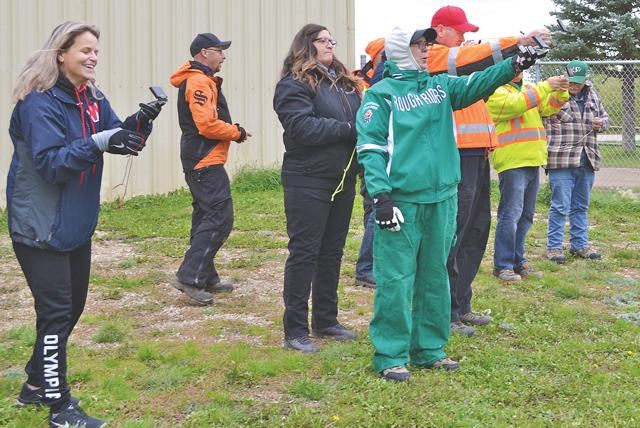The first 12 Southeast Saskatchewan Search and Rescue (SESK SAR) volunteers received their basic searcher certificates on Sept. 29. It means that now after they get activated, the southeast will have their own group of professional SAR volunteers who can join the operation if someone goes missing.
The volunteers who went through the ground training were Katia Bigney, Anastasiia Bykhovskaia, Roberta DeRosier, Clarence Fradette, Charlotte Halabuza, Rick Hallberg, Derek Layden, Mike Meyer, Tacey Meyer, Mickey Quigley, Jim Stewart and Sandy Stewart.
Three senior instructors came to Estevan two weeks in a row to ensure that the young sister-chapter members have all the tools needed to partake in a search operation. Linda Mushanski of Wood River SAR, Dave Frisbie of Parkland SAR and Pat Casement of Wadena and District Search and Rescue shared their skills and knowledge with the group of SESK SAR volunteers from Estevan, Weyburn, Alameda and Oxbow.
The intensive course of training included both theoretical and practical parts. The back to back weekends were loaded with information sessions and exercises, aimed at arming the rookie searchers with basic survival, first aid, search, rope tying, tracking, rescue, communication, on-ground orientation and other vital skills.
The course also focused on the search and rescue volunteers’ body management, personal safety and preparedness, leaving the trainees with a great amount of information to continue practising and growing their knowledge.
One step at a time, the group was moving towards putting together a greater picture of what is needed to be able to respond to a missing person call. The navigation and a few other exercises helped to enhance the theoretical base.
The training course came to an end with an exam, ensuring that the information settled down and is now ready to become a base for further and more advanced training.
Now the trained volunteers will fill their ready-to-go packs with the needed personal equipment, and after a few other steps, the first SESK SAR group will be activated.
It means that if one day the call comes, these 12 people, joined by more experienced search and rescue volunteers from neighbouring chapters, will be able to be out there for the community and will use all the knowledge and skills to do their best to ensure that the lost person is found.
Previously the Bayliss family has presented SESK SAR chapter with the incident command trailer – one of the most important pieces of equipment for any SAR organization. Now the new chapter has begun to fill it up with professional gear and equipment such as compasses, GPS, high-visibility SAR winter coats, computers, radios and much more.
The next group of SESK SAR members plan to go into training in November.



